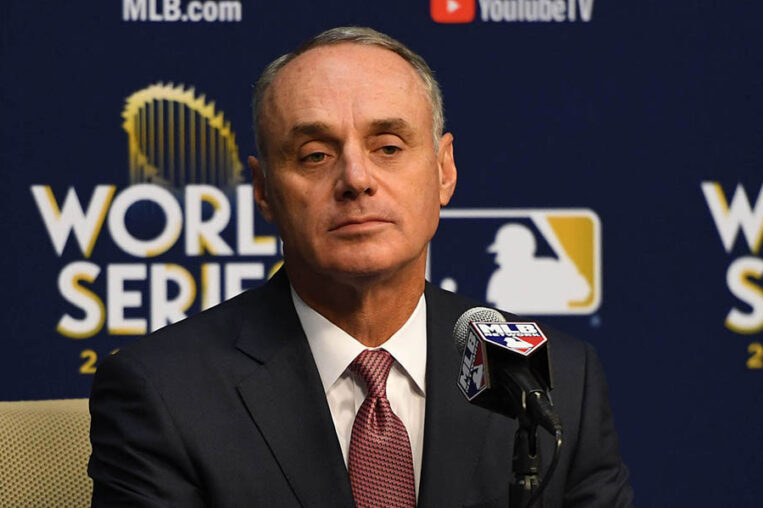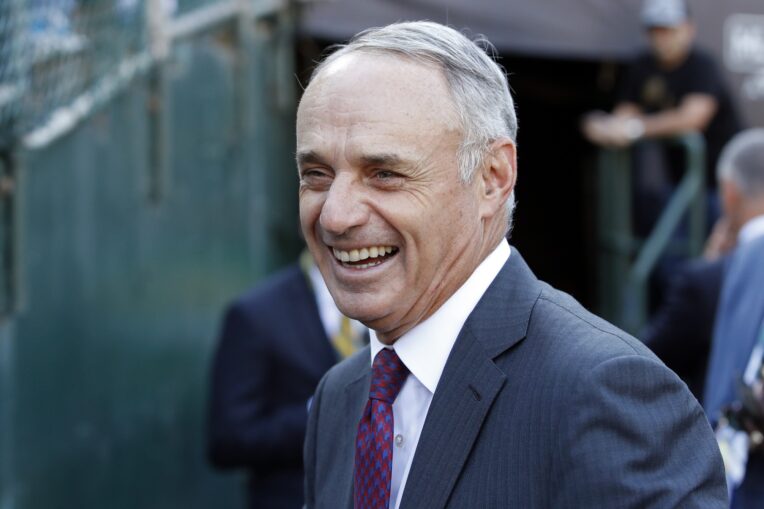
Recently we have seen some Major League Baseball contracts with longer-than-usual durations. Consider Trea Turner‘s deal with the Philadelphia Phillies (11 years), Carlos Correa‘s contract with the San Francisco Giants (13 years), and Xander Bogaerts‘ contract with the San Diego Padres (11 years). Teams and players are free to negotiate mutually beneficial deals, but if contract length is being used as a means to get around the Competitive Balance Tax (CBT), MLB may have a developing issue.
As a reminder, here is how the CBT will work for the duration of the current Collective Bargaining Agreement, which expires after the 2026 season. The tax thresholds by year are listed below.
2022: $230 million
2023: $233 million
2024: $237 million
2025: $241 million
2026: $244 million
A club that exceeds the CBT is subject to an increasing tax rate, depending on how many consecutive years it has done so.
First year: 20 percent tax on all overages
Second consecutive year: 30 percent on overages
Third consecutive year or more: 50 percent on overages
Going back to Turner’s deal, he signed for a total of $300 million over 11 years. When the contract is in its last year, Turner will be 41 years old, earning roughly $27 million dollars. Did the Phillies structure the contract that way because they felt Turner would be producing at a $27 million level in the 11th year of his contract, or did they do it so they could soften the impact of Turner’s deal on their payroll each year, and subsequently have more maneuverability to spend and remain under the tax threshold?
The same could be said about Correa’s and Bogaert’s contracts, and even the mega-deal the Yankees handed to Aaron Judge. What’s the big deal? The current CBA has some language that calls out CBT manipulation. In an article in The Athletic by Ken Rosenthal, the author summarizes the relevant verbiage in the CBA:
Baseball’s collective-bargaining agreement states neither players nor clubs shall enter into any agreement “designed to defeat or circumvent the intention” of the luxury tax. The language is vague, subject to interpretation. But if the league determined a circumvention occurred, it conceivably could ask the parties to restructure the contract, most likely by agreeing to a shorter term, or reject the deal entirely.
It’s hard to see a contract challenge by either side ending well. It was less than one year ago that we lived through a 99-day lockout, full of blaming, mistrust, and rhetoric. The players would certainly view a challenge by the owners as a way of restricting spending on contracts, and they probably would be correct.
Could this potential issue have been avoided? Yes, it could, if MLB had modeled the National Basketball Association or the National Hockey League. Both leagues have salary caps, and both have implemented contract length restrictions to avoid cap work-around tactics. From Rosenthal’s article:
The NBA’s maximum contract length is five years. The NHL’s maximum is eight years for teams that re-sign their own players, and seven for players signing a free-agent deal with a new team. The NFL has no maximum. Donovan McNabb’s 12-year extension in 2002 is the longest deal in league history, but only $20 million of his potential $115 million was guaranteed. The NFL, unlike the three other major North American sports leagues, does not typically guarantee multi-year contracts for veteran players.
If there have been no challenges to date on contract length, when seemingly at least part of the intent has been to preserve spending room under the tax threshold, that may not be the case forever. According to Rosenthal, the Phillies discussed offering Bryce Harper a 20-year contract, before agreeing with the star outfielder on a 13-year deal. This was before the 2019 season, so not very long ago. Further, there is speculation that the Padres considered offering Judge a 14-year extended deal.
At some point, there likely will be a challenge on contract length as a way to circumvent the CBT. The small-market owners already take issue with the spending habits of the large-market owners. Imagine if, perhaps Steve Cohen, signs a player to a 20-year, mega-contract. Not only would he be doing something that smaller clubs say they cannot do, but if the Mets were able to spread the money thinly enough to stay under the CBT threshold, they will not have to contribute to the fund that provides revenue for the Pirates and Orioles of the world.
This contract-length story may be worth watching. MLB doesn’t need more labor strife, but storm clouds may be forming on this one. If not now, this matter may become a sticking point in the next CBA negotiations.
It’s safe to say no one wants to go through that, especially the fans.
















